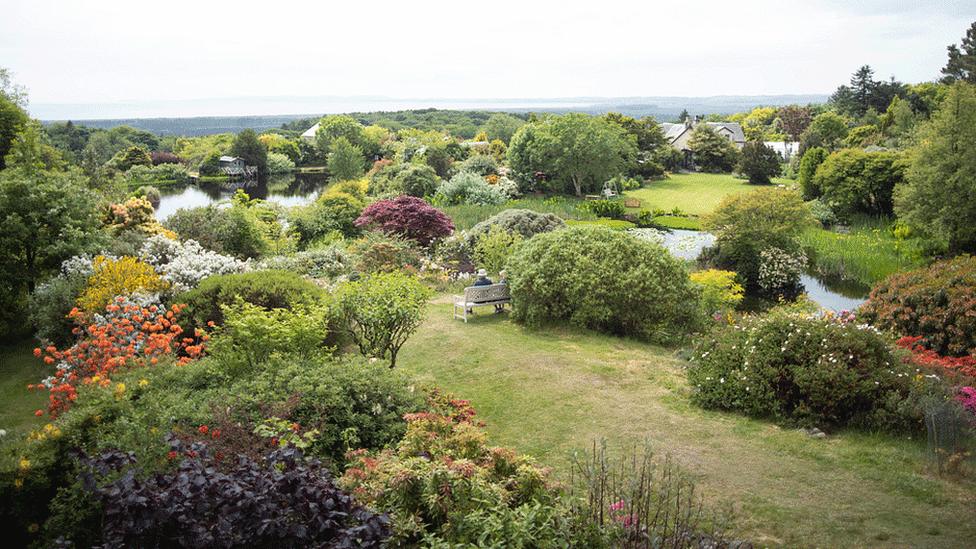Glenwhan Gardens: Former 'wild moorland' now recognised as historic site
- Published

The Galloway gardens have been transformed since the 1970s
Gardens in Galloway that were once a "wild and seemingly inhospitable moorland" have been recognised by Historic Environment Scotland (HES).
Tessa Knott Sinclair began work in upgrading the site at Glenwhan from scratch in the late 1970s.
It has now added it to the HES inventory of gardens and designed landscapes.
The designation has to be taken into account when deciding any planning applications in the area.
Glenwhan is home to a number of rare species
HES said the gardens and arboretum near Glenluce were of "outstanding artistic interest".
The water features on the site link with views over Luce Bay and the Mull of Galloway and beyond.
It is also the home to collections of rare species of rhododendron and azaleas, shrub, and trees, including many rare specimens from China and the southern hemisphere.
A member of the public nominated Glenwhan for the recognition.
The designation will have to be considered in any planning applications in the area
HES head of designations Dara Parsons said it was an "excellent addition" to the inventory.
"Gardens and designed landscapes of the recent past such as Glenwhan are an important element of Scotland's historic environment and landscape," he said.
"However, they are not always valued as much as older sites and can also be vulnerable to loss.
"It's important to record and promote awareness of these sites through our work.
"We also need to ensure we protect them in the same way as older sites."
A place on the inventory recognises the national significance of the site
Ms Knott Sinclair said she was "delighted" with the recognition.
"For many years, we have worked to create a special and unique place for all to come and enjoy the seasons in the garden," she said.
"We are so pleased our efforts will now be marked and celebrated by HES."
A member of the public nominated the gardens for recognition
Water features on the site link in with the coastal landscape
The gardens and arboretum have been described as of "outstanding artistic interest"
Work has taken place over decades to make Glenwhan a "special and unique place"
All images are copyrighted.